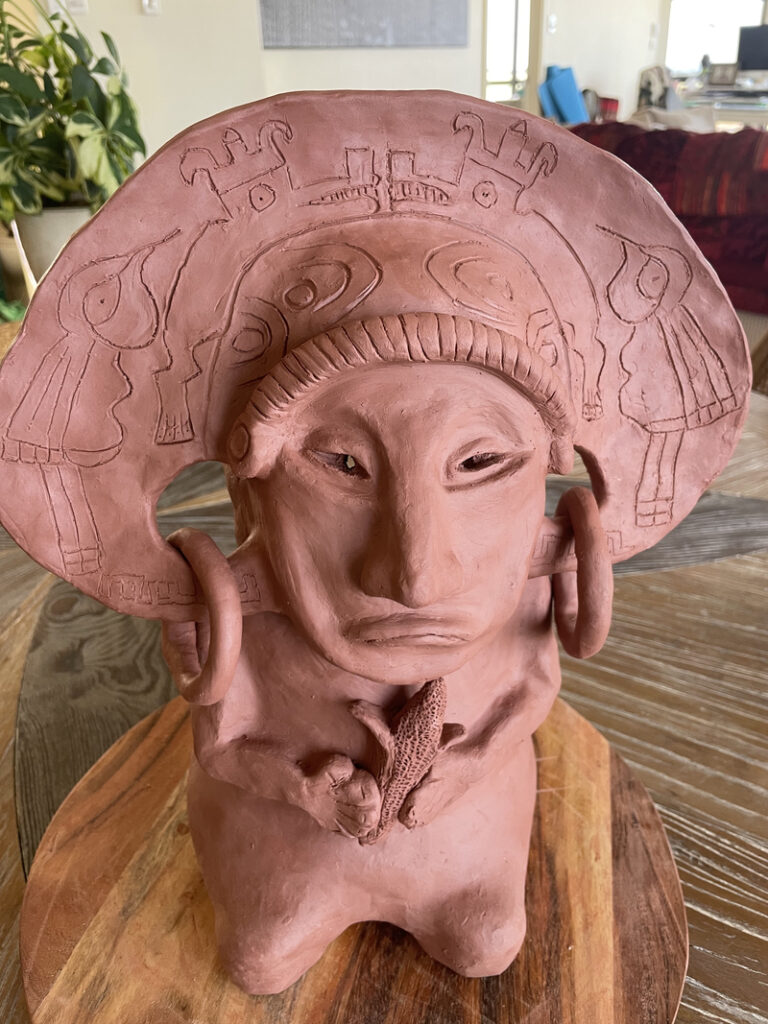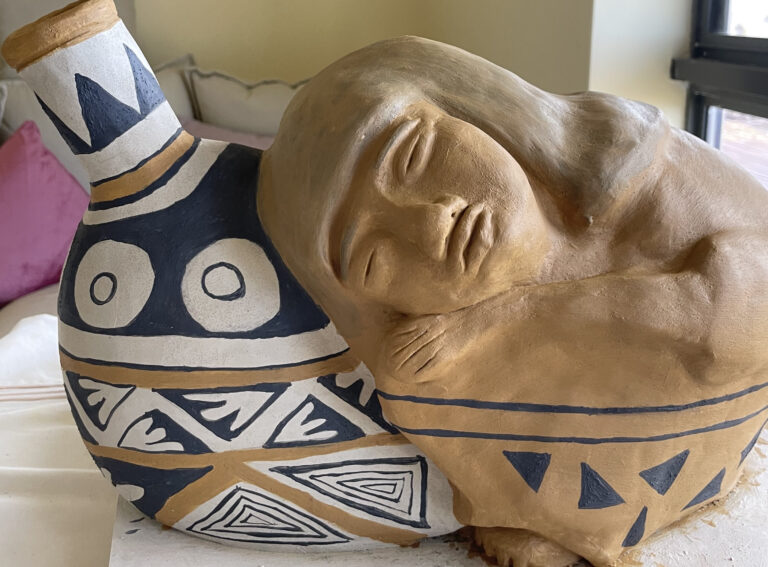This is How I Created God of Abundance
My house is blessed by God of Abundance because I created him.
Design and origin of God of Abundance
God of Abundance is inspired by multiple cultures.
The stern facial expression is inspired by the moai statues on Easter Islands.
The hummingbird and crocodile motifs on the headpiece are inspired by the South American ancient symbols from cultures such as Aztec, Inca and Maya.
The hummingbird was revered in many South American ancient cultures, and each culture assigned a different meaning to the symbol.
Click here to see an Aztec ancient pot with hummingbird symbols.
The face and body painting is influenced by the ancient Egyptian symbols.
The overall design and the concept of a god who protects and blesses the yield of crops come from my Hakka culture where everything on Earth has a god as its guardian. This is because of the hardship my people had experienced for almost two thousand years. They created gods to create hope.
Please check out my ther pottery projects and my autobiographical fiction for my story about being born as a female in a Hakka village where female infant trafficking was still a custom.
The joy of making God of Abundance
This is the first pottery project where I’ve designed the piece from scratch, using my imagination. My other pieces were based on photos and live objects.
It is also my first piece painted with acrylic paints after firing. I had so much fun painting it, so I made two more pieces using acrylics, which I will post later.
All my other pieces were painted with either slips or glazes on greenware (meaning before firing).
I took big risks in the design and bold colours and was rewarded by the joy of seeing the images in my head materialize bit by bit in front of my eyes.
The making of God of Abundance
Materials
- Water-based clay without grog, earthenware clay, fired at 1,200 degrees celsius
- Acrylics for the surface finishing after firing
- Three coats of acrylics with metallic gold as the first coat and slowly building up to the finishing colours presented in the images and video below.
Method
- The vessel was built with the coiling method
- The head piece was made by rolling out a slab and cutting to shape
- The headpiece was left to stiffen and then was attached to the body when the two parts reached similar formness.
- The earrings were made of coils.
















